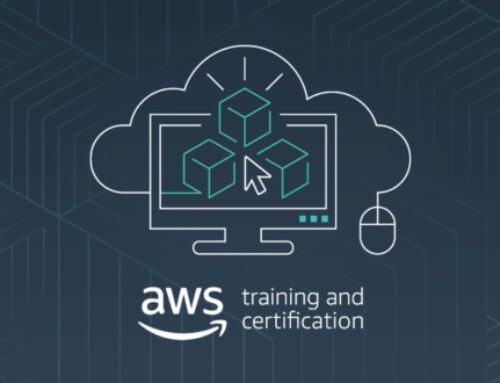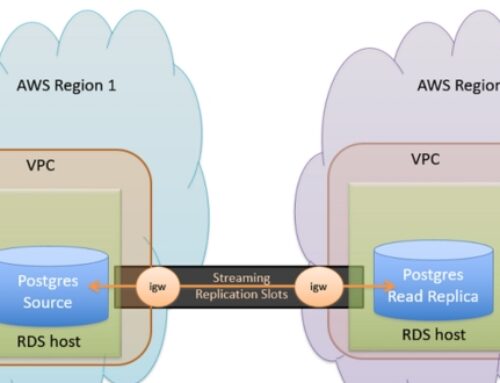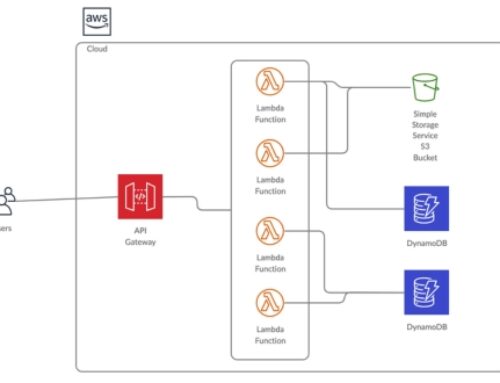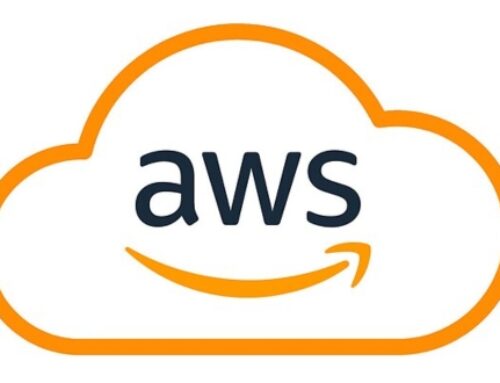Introduction to AWS Serverless Application Development
Brief Overview of Serverless Computing
Serverless computing, a paradigm shift in the cloud landscape, has revolutionized the way we build and deploy applications. Unlike traditional server-based architectures, where developers manage and maintain server infrastructure, serverless computing abstracts away this complexity. In a serverless model, you focus solely on your application code, leaving the underlying infrastructure management to the cloud provider. This translates to faster development cycles, reduced operational overhead, and increased scalability and agility.
Key Concepts in Serverless Computing:
- Event-driven architecture: Applications react to specific events (e.g., user actions, API calls, data changes) rather than running continuously.
- Serverless functions: Code is packaged into discrete functions that are triggered by events and executed on-demand.
- Pay-per-use pricing: You only pay for the resources your application consumes while running, eliminating idle server costs.
- Managed services: Cloud providers offer a wide range of pre-built services for various functionalities, eliminating the need for manual configuration and maintenance.
Benefits of Serverless Computing:
- Focus on code: Developers can concentrate on writing application logic without worrying about infrastructure management.
- Faster development and deployment: Serverless functions deploy quickly and scale automatically, enabling rapid iteration and time-to-market.
- Cost-effective: Pay-per-use pricing eliminates idle server costs and optimizes resource utilization.
- Scalability: Applications automatically scale up and down based on demand, ensuring optimal performance and cost efficiency.
- High availability: Cloud providers manage infrastructure redundancy and fault tolerance, ensuring application uptime.
Advantages of Serverless Architecture
Serverless computing offers several advantages over traditional server-based architectures, making it a compelling choice for modern application development:
- Reduced operational overhead: Developers no longer need to manage servers, patches, or security updates, freeing up time for core development tasks.
- Improved developer experience: Serverless development is often faster and more enjoyable, with simple deployment and event-driven programming.
- Increased agility and scalability: Applications can easily adapt to changing demand patterns and scale automatically without manual intervention.
- Enhanced security: Cloud providers offer robust security features and manage infrastructure vulnerabilities, reducing your security burden.
- Cost optimization: Pay-per-use pricing ensures you only pay for the resources your application consumes, reducing wasted spending.
Importance of AWS in Serverless Application Development
AWS, a pioneer in cloud computing, has established itself as a leader in serverless application development. AWS offers a comprehensive suite of serverless services, including:
- AWS Lambda: A serverless compute service that executes code in response to events.
- Amazon API Gateway: A managed service for creating and managing RESTful APIs.
- Amazon DynamoDB: A NoSQL database service for high-performance data storage.
- Amazon S3: A scalable object storage service for storing and managing any type of data.
- AWS CloudFormation: A service for managing and provisioning cloud infrastructure resources.
Benefits of Using AWS for Serverless Applications:
- Comprehensive suite of services: AWS offers a wide range of serverless services for building and deploying complete applications.
- Mature and reliable platform: AWS has a proven track record of scalability, security, and reliability.
- Extensive developer community: A large and active community provides support, resources, and best practices.
- Integration with other AWS services: Serverless services seamlessly integrate with other AWS offerings, creating a robust cloud ecosystem.
Conclusion:
Serverless computing, powered by AWS, is transforming the way we build and deploy applications. Its focus on code, fast development cycles, cost efficiency, and automatic scalability makes it a compelling choice for modern developers. By leveraging AWS’s comprehensive serverless platform and vast experience, you can build highly scalable, cost-effective, and agile applications that thrive in the dynamic cloud environment.
Understanding AWS Lambda
Definition and Role in Serverless Architecture
AWS Lambda is a serverless computing service provided by Amazon Web Services (AWS). In serverless architecture, developers can execute code without provisioning or managing servers. Lambda allows you to run your code without the need to provision or manage servers explicitly. This paradigm shift eliminates the traditional overhead of server management, enabling developers to focus solely on writing code and building applications.
Role in Serverless Architecture:
- Event-Driven Execution: Lambda operates in response to events, triggering functions when events occur. This event-driven approach aligns with the principles of serverless computing, where resources scale dynamically based on demand.
- Microservices Implementation: Lambda is instrumental in implementing microservices architectures. Each Lambda function represents a discrete piece of functionality, promoting modular development and simplified maintenance.
- Cost-Efficiency: With Lambda, you pay only for the compute time your code consumes, leading to cost savings compared to traditional server-based models where resources may be underutilized.
Key Features and Capabilities
- Language Support:
- Lambda supports multiple programming languages, including Node.js, Python, Java, C#, Go, and Ruby. This flexibility allows developers to use their preferred language.
- Auto-Scaling:
- Lambda functions automatically scale in response to incoming traffic. Each function can run in parallel, scaling horizontally to handle varying workloads.
- Stateless Execution:
- Lambda functions are stateless, meaning each invocation is independent. This statelessness simplifies development and ensures that functions can run in parallel without conflicts.
- Event Sources and Triggers:
- Lambda integrates seamlessly with various AWS services as event sources. Events can be generated by services like Amazon S3, Amazon DynamoDB, Amazon API Gateway, and more, triggering Lambda functions in response.
- Serverless Application Model (SAM):
- SAM is an open-source framework for building serverless applications. It extends AWS CloudFormation to provide a simplified way of defining serverless resources, including Lambda functions.
Integration with Other AWS Services
- AWS API Gateway:
- Lambda functions can be easily connected to API Gateway, allowing you to build scalable and secure APIs. This integration simplifies the process of exposing Lambda functions as HTTP endpoints.
- Amazon S3:
- Lambda functions can be triggered by events in Amazon S3, such as object creation or deletion. This enables developers to create automated workflows for processing files stored in S3.
- Amazon DynamoDB:
- Lambda can respond to changes in DynamoDB tables, making it a powerful tool for real-time data processing. For example, you can trigger a Lambda function when a new item is added to a DynamoDB table.
- Amazon CloudWatch Events:
- Lambda functions can be scheduled using CloudWatch Events, enabling you to perform periodic tasks, such as data backups or system maintenance.
- AWS Step Functions:
- Lambda seamlessly integrates with AWS Step Functions, allowing you to orchestrate multiple Lambda functions as a workflow. This is particularly useful for coordinating microservices.
Use Cases and Examples
- Image Processing:
- Lambda can be used to process images uploaded to S3, generating thumbnails or applying filters in real-time.
- Real-time Data Processing:
- By responding to DynamoDB stream events, Lambda can process and analyze data in real-time, facilitating dynamic and scalable applications.
- Chatbots and Voice Assistants:
- Lambda functions can power chatbots or voice assistants, handling natural language processing and providing intelligent responses.
- Serverless Web Applications:
- Entire serverless web applications can be built using Lambda, API Gateway, and other serverless services for back-end logic.
In conclusion, AWS Lambda plays a pivotal role in serverless architectures, providing developers with a scalable, cost-effective, and event-driven compute service. Its seamless integration with various AWS services makes it a versatile tool for building a wide range of applications and responding dynamically to real-time events. As we explore further into serverless development, Lambda stands as a cornerstone for building modern, efficient, and highly responsive applications in the AWS ecosystem.
Benefits of Serverless Applications
Serverless computing has revolutionized the way developers build and deploy applications, offering a myriad of benefits that translate into cost savings, scalability, and simplified management. Let’s delve into the key advantages of serverless applications:
Cost-Efficiency
Serverless computing follows a pay-per-use model, where you are billed only for the compute resources consumed by your code. This model eliminates the need for provisioning and maintaining servers, resulting in significant cost savings. Here’s how serverless applications contribute to cost-efficiency:
- Reduced Overhead Costs:
With serverless, there’s no need to invest in infrastructure provisioning, maintenance, or capacity planning. This reduction in overhead costs allows organizations to allocate
resources more efficiently.
- Granular Billing:
Serverless platforms, such as AWS Lambda, charge based on the number of invocations and the duration of function execution. This granular billing model ensures that you only pay for the resources consumed during code execution, eliminating idle capacity costs.
- Scalable Pricing:
Serverless services automatically scale resources based on demand, ensuring that you don’t over-provision resources during periods of low traffic. This scalability optimizes costs by aligning resource consumption with actual usage patterns.
- Cost Transparency:
Serverless platforms provide detailed billing reports and monitoring dashboards, offering insights into resource consumption and associated costs. This transparency enables organizations to optimize their usage and identify cost-saving opportunities.
Auto-Scaling and Flexibility
Serverless architectures offer unparalleled scalability and flexibility, allowing applications to seamlessly handle fluctuating workloads without manual intervention. Here’s how serverless applications leverage auto-scaling and flexibility:
- Dynamic Scalability:
Serverless platforms automatically scale resources in response to changes in workload demand. Whether it’s handling a sudden spike in traffic or scaling down during periods of low activity, serverless architectures adapt dynamically to meet performance requirements.
- Elasticity and Agility:
Serverless services, such as AWS Lambda, provide elastic compute capacity, allowing applications to scale from a few invocations per day to thousands or even millions in real-time. This agility enables organizations to respond quickly to changing business needs and market dynamics.
- Fault Tolerance:
Serverless architectures inherently distribute workloads across multiple instances, enhancing fault tolerance and reliability. In the event of a server failure or outage, the platform automatically redirects traffic to healthy instances, ensuring uninterrupted service availability.
- Global Reach:
Serverless services are inherently designed for global scalability, with data centers located in multiple regions worldwide. This global reach enables organizations to deploy applications closer to end-users, reducing latency and improving performance.
Simplified Deployment and Management
Serverless computing simplifies the deployment and management of applications, allowing developers to focus on building features rather than managing infrastructure.
Here’s how serverless applications streamline deployment and management:
- Zero Server Management:
With serverless, developers are relieved from the burden of server provisioning, patching, and maintenance tasks. This zero-server management approach frees up valuable time and resources, allowing teams to focus on writing code and delivering value to customers.
- Seamless Deployment:
Serverless platforms provide seamless deployment mechanisms, allowing developers to deploy code changes with a single command or through continuous integration/continuous deployment (CI/CD) pipelines. This streamlined deployment process accelerates time-to-market and promotes agile development practices.
- Built-in Scalability and Availability:
Serverless services inherently incorporate scalability and availability features, such as auto-scaling and fault tolerance. Developers can rely on these built-in capabilities to ensure high availability and performance without the need for manual configuration.
- Serverless Ecosystem:
Serverless platforms offer a rich ecosystem of pre-built services and integrations, enabling developers to leverage ready-made components for common tasks such as authentication, data storage, and messaging. This ecosystem accelerates development and reduces the need for custom-built solutions.
In conclusion, serverless applications offer a compelling array of benefits, including cost-efficiency, auto-scaling, flexibility, and simplified deployment and management. By leveraging serverless architectures, organizations can optimize resource utilization, improve scalability, and accelerate innovation, ultimately driving business agility and competitiveness in today’s dynamic digital landscape.
AWS Serverless Compute Services
Serverless computing has become a cornerstone in modern application development, offering scalability, cost-efficiency, and a simplified architecture. AWS, with its suite of serverless compute services, empowers developers to build and deploy applications without managing the underlying infrastructure. In this section, we’ll explore two key AWS serverless compute services: AWS Lambda and AWS Step Functions.
AWS Lambda
AWS Lambda is a serverless compute service that allows developers to run code without provisioning or managing servers. It supports a variety of use cases, from executing backend logic in response to events to building entire serverless applications.
- Serverless Compute with Lambda
Lambda follows the serverless computing paradigm, where developers can focus solely on writing code without the need for server management. With Lambda, functions are executed in a stateless manner, triggered by events such as changes to data in an Amazon S3 bucket, updates to a DynamoDB table, or HTTP requests through Amazon API Gateway. This event-driven model enables developers to build scalable and responsive applications without worrying about infrastructure scaling.
- Supported Runtimes and Languages
Lambda supports a wide range of programming languages and runtimes, allowing developers to choose the language that best suits their needs. The supported runtimes include Node.js, Python, Java, C#, Go, and Ruby. This flexibility allows teams to use the languages they are most comfortable with or that align with specific project requirements.
- Event Sources and Triggers
Lambda functions can be triggered by various event sources, providing the flexibility to respond to different types of events in real-time. Common event sources include:
- Amazon S3: Trigger Lambda functions when objects are created, modified, or deleted in an S3 bucket.
- Amazon DynamoDB: Respond to changes in DynamoDB tables, enabling real-time data processing.
- Amazon API Gateway: Execute Lambda functions in response to HTTP requests, creating serverless APIs.
AWS Step Functions
AWS Step Functions is a fully managed service that enables developers to coordinate and orchestrate multiple AWS services as a workflow. It simplifies the process of building distributed applications by providing a visual representation of the workflow and managing the execution of each step.
- Workflow Automation with Step Functions
Step Functions allows developers to define workflows using a visual interface. Workflows are created by defining a series of steps, each representing a specific action or task. These steps can include Lambda functions, AWS Glue jobs, AWS Batch tasks, and more. The visual representation provides a clear overview of the entire workflow, making it easy to understand and manage.
- Coordination of Serverless Components
Step Functions excel in coordinating serverless components within a larger architecture. For example, a workflow might involve multiple Lambda functions, each responsible for a specific task, and Step Functions ensure that these functions are executed in the correct order with proper error handling and retries. This coordination is crucial for building complex applications composed of microservices or serverless functions.
- Use Cases and Best Practices
- Microservices Orchestration: Step Functions are ideal for orchestrating microservices, ensuring that different components work together seamlessly to achieve a specific business process.
- Workflow Automation: It excels in automating business processes where multiple steps need to be executed in a defined sequence.
- Error Handling: Step Functions provide built-in error handling and retries, enhancing the robustness of workflows.
- Integration with AWS Services: Integrate Step Functions with various AWS services, including Lambda, for efficient and scalable serverless workflows.
In conclusion, AWS Lambda and AWS Step Functions are integral components of AWS’s serverless compute services. While Lambda focuses on executing individual functions in response to events, Step Functions provide a higher-level abstraction for coordinating and orchestrating workflows involving multiple serverless components. Leveraging these services enables developers to build scalable, efficient, and event-driven serverless applications, bringing agility and simplicity to the forefront of modern application development on the AWS platform.
Building Serverless APIs with Amazon API Gateway
Introduction to Amazon API Gateway
Amazon API Gateway is a fully managed service that enables developers to create, publish, and manage APIs (Application Programming Interfaces) at any scale. It acts as a gateway for connecting applications to various AWS services, external HTTP endpoints, or Lambda functions, making it a key component for building serverless APIs.
API Design and Configuration
API Gateway provides a user-friendly interface for designing APIs, allowing developers to define endpoints, methods, and request/response transformations. With API Gateway, developers can configure API behavior, including setting up custom domains, handling CORS (Cross-Origin Resource Sharing), and managing API versions.
Integration with AWS Lambda Functions
One of the notable features of Amazon API Gateway is its seamless integration with AWS Lambda functions. This integration allows developers to create serverless APIs by associating API Gateway resources and methods with specific Lambda functions. When an API endpoint is invoked, it triggers the corresponding Lambda function, enabling the execution of serverless backend logic.
Security and Authentication
API Gateway provides robust security features to protect serverless APIs. Developers can implement authentication and authorization mechanisms, including API key validation, IAM (Identity and Access Management) integration, and custom authorizers. Additionally, API Gateway supports the generation of client SDKs (Software Development Kits) to facilitate secure communication between client applications and the API.
In summary, Amazon API Gateway simplifies the process of building serverless APIs by offering a comprehensive set of tools for API design, configuration, and integration. Its tight integration with AWS Lambda functions, coupled with robust security features, makes it a versatile and essential service for developers looking to expose serverless functionalities through well-designed APIs.
Serverless Data Storage Solutions
Amazon DynamoDB
- NoSQL Database in a Serverless Environment:
Amazon DynamoDB is a fully managed NoSQL database service that seamlessly integrates with serverless architectures. It provides a serverless approach to database management, eliminating the need for provisioning or managing database servers.
- Scalability and Performance:
DynamoDB offers automatic and seamless scalability, ensuring that database performance scales dynamically based on application demand. This makes it well-suited for serverless applications with varying workloads.
- Integration with Serverless Applications:
DynamoDB integrates effortlessly with serverless applications, serving as a reliable and high-performance data storage solution. Its integration capabilities simplify data access for serverless functions, facilitating efficient application development.
Amazon S3
- Object Storage for Serverless Apps:
Amazon S3, a highly scalable and durable object storage service, serves as a valuable data storage solution for serverless applications. It provides a serverless way to store and retrieve large volumes of data without managing underlying infrastructure.
- Use Cases and Best Practices:
Amazon S3 is ideal for storing a variety of data types, including images, videos, and application artifacts. Best practices include optimizing storage costs with S3 storage classes, securing data with access controls, and leveraging event triggers for seamless integration with serverless functions.
In conclusion, both Amazon DynamoDB and Amazon S3 offer powerful serverless data storage solutions, each tailored to specific use cases. DynamoDB excels in providing a NoSQL database environment with seamless scalability, while S3 serves as a versatile object storage solution for serverless applications, facilitating efficient data management and access.
Serverless Application Patterns and Best Practices
Embracing serverless architecture involves adopting specific patterns and best practices to ensure optimal performance, scalability, and efficiency. Here are key serverless application patterns and best practices:
- Microservices Architecture:
Break down applications into small, independent microservices, each managed by a serverless function. This promotes modularity, flexibility, and ease of maintenance, allowing developers to focus on specific functionalities.
- Event-Driven Architectures:
Leverage event-driven architectures where serverless functions respond to events triggered by changes in state or data. This pattern enhances decoupling, scalability, and real-time responsiveness, aligning with the serverless paradigm.
- Cold Starts and Performance Optimization:
Mitigate cold start latency by employing performance optimization techniques. Strategies include using smaller deployment packages, implementing warm-up mechanisms, and optimizing code for faster initialization, ensuring responsive serverless function execution.
Testing and Debugging Serverless Applications
Testing and debugging are crucial aspects of developing robust serverless applications. Adopting effective strategies and tools ensures the reliability and performance of serverless code:
- Strategies for Testing Serverless Code:
Employ unit testing, integration testing, and end-to-end testing to validate the functionality of individual functions and their interactions. Leverage local testing environments and frameworks like AWS SAM (Serverless Application Model) for thorough testing.
- Debugging Tools and Techniques:
Utilize cloud-based debugging tools provided by serverless platforms. AWS X-Ray and CloudWatch Logs enable developers to trace and troubleshoot issues in distributed serverless architectures. Implement comprehensive logging and monitoring to identify and address runtime errors, ensuring the smooth operation of serverless applications.
Serverless Security Best Practices
Ensuring the security of serverless applications is paramount in a dynamic cloud environment. Implementing robust security practices is crucial for safeguarding sensitive data and maintaining compliance:
- Identity and Access Management:
Utilize AWS Identity and Access Management (IAM) to manage and control access to serverless resources. Implement the principle of least privilege, granting only the necessary permissions to functions, roles, and users.
- Encryption and Data Protection:
Employ encryption mechanisms, both in transit and at rest, to protect data integrity and confidentiality. Leverage AWS Key Management Service (KMS) for managing cryptographic keys and implement encryption for storage and communication.
- Compliance and Auditing:
Adhere to regulatory compliance requirements by regularly auditing serverless configurations. Monitor and log activities using AWS CloudTrail, enabling detailed visibility into API calls and resource usage for compliance reporting and incident investigation.
Future Trends in AWS Serverless Development
The future of AWS serverless development holds exciting possibilities with emerging technologies poised to shape the landscape:
- Emerging Technologies in Serverless Computing:
Anticipate the integration of emerging technologies such as edge computing, machine learning, and increased support for diverse programming languages. These advancements will further enhance the capabilities and versatility of serverless architectures.
- Anticipated Developments and Innovations:
Look forward to innovations in event-driven architectures, providing even more seamless ways for serverless functions to respond to a broader range of events. Anticipate improved tooling, increased automation, and enhanced developer experiences as AWS continues to evolve its serverless offerings. Stay tuned for developments that will further simplify application development and deployment in the serverless paradigm.
Conclusion
AWS Serverless Application Development represents a paradigm shift in the way applications are built and deployed. With services like AWS Lambda, developers can focus on code logic without the burden of managing infrastructure. The benefits, ranging from cost-efficiency and auto-scaling to simplified deployment, have propelled serverless architectures into the forefront of modern development.
The versatility of AWS serverless compute services, such as Lambda and Step Functions, enables the creation of scalable, event-driven, and fault-tolerant applications. Amazon API Gateway seamlessly facilitates the construction of APIs, ensuring efficient communication between services. Serverless data storage solutions like Amazon DynamoDB and Amazon S3 offer scalable and reliable data management.
As serverless application patterns continue to evolve, embracing microservices and event-driven architectures becomes essential. Addressing challenges like cold starts through performance optimization further refines serverless development practices. Security best practices, including robust identity management and encryption, safeguard applications in a dynamic cloud environment.
Looking ahead, the future of AWS serverless development holds promises of integrating emerging technologies and streamlining developer experiences. AWS’s commitment to innovation ensures a continuously evolving ecosystem that empowers developers to build scalable, efficient, and resilient applications in the ever-changing landscape of cloud computing.









